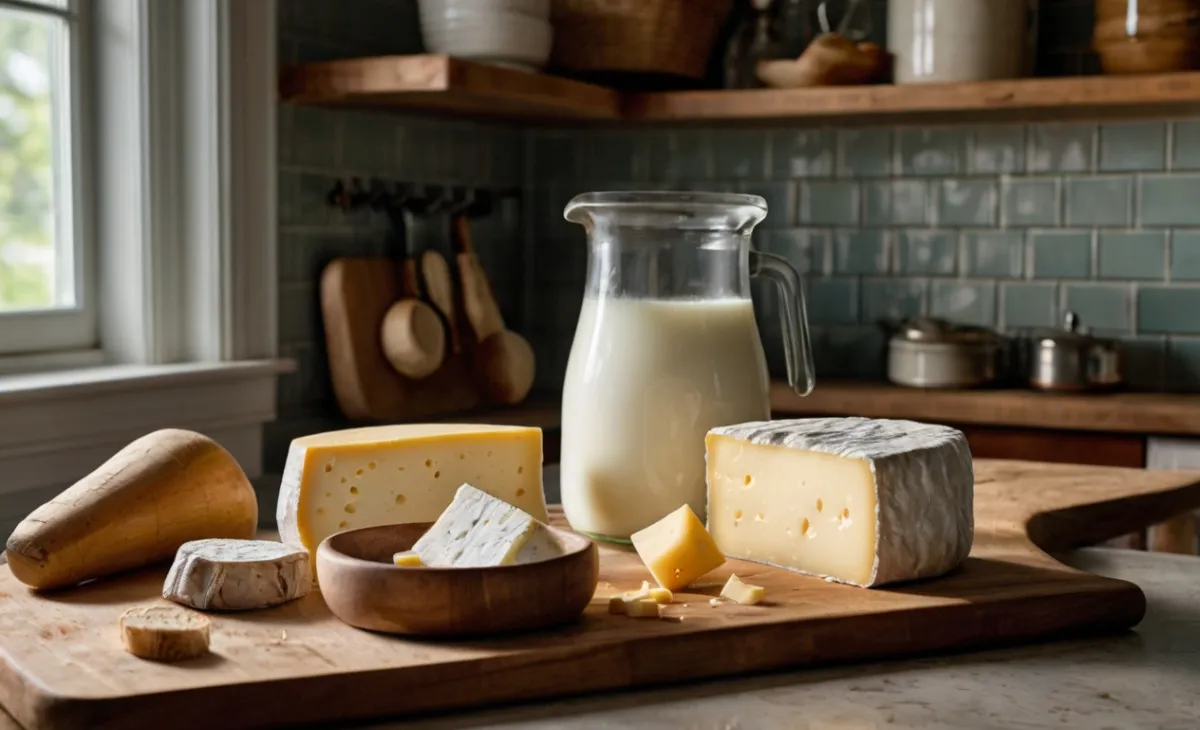The Ultimate Guide: How to Make Cheese Step by Step at Home
The Ultimate Guide: How to Make Cheese Step by Step at Home
Crafting cheese at home can be one of the most rewarding kitchen experiences. Whether you love experimenting with new culinary skills or simply crave a taste that is tailored to your preferences, making cheese is an art that is both fun and fulfilling. From fresh cheeses like mozzarella to aged varieties like cheddar, the process may seem complex at first glance, but with this comprehensive guide, you’ll have the confidence to make your own cheese step by step at home.
Why Make Cheese at Home?
You might wonder why you should go through the process of making cheese at home when it’s so easily available at stores. Here’s why: when you create cheese at home, you have complete control over the quality of the ingredients and the flavors that go into your product. You can skip artificial additives and preservatives and choose high-quality milk to craft a cheese that’s healthier and more flavorful. Beyond that, making cheese from scratch is surprisingly cost-effective compared to buying specialty cheeses. Plus, the joy and sense of accomplishment that come from creating your own cheese are unmatched.
Essential Ingredients and Tools for Making Cheese at Home
Before you dive into making your own cheese, it’s crucial to gather the necessary ingredients and equipment. The right tools and materials will make the process smoother and more efficient.
Ingredients Table:
| Ingredient | Quantity |
|---|---|
| Whole milk | 1 gallon |
| Rennet | 1/4 tablet or 1/2 tsp liquid |
| Cheese salt | To taste |
| Starter culture | 1/4 tsp |
| Distilled water | For diluting rennet |
Necessary Equipment:
- Cheese thermometer: Ensures accurate temperature readings to achieve the desired texture.
- Large stainless steel pot: Avoids reactions with the milk.
- Cheesecloth: Helps drain the curds efficiently.
- Slotted spoon: Perfect for handling curds without breaking them.
- Colander: Useful for draining whey.
- Cheese mold: Shapes your cheese while pressing out extra whey.
- pH meter: Optional but excellent for precise cheese-making.
Step-by-Step Guide on How to Make Cheese at Home
Step 1 – Prepare Your Workspace and Ingredients Start by sanitizing your equipment and workspace to prevent contamination. This step is vital for ensuring your cheese stays fresh and safe to eat. Make sure your whole milk is high-quality, as this directly impacts the flavor and texture of your cheese. Raw milk is often ideal for cheese-making, but pasteurized milk works well too. Steer clear of ultra-pasteurized milk, as it can interfere with curd formation.
Step 2 – Heat the Milk Pour your whole milk into a large stainless steel pot and place it over low heat. Use your cheese thermometer to monitor the temperature closely, and bring the milk to 85°F (29°C). Stir occasionally to prevent scorching, ensuring an even distribution of heat.
Step 3 – Add the Starter Culture With the milk warmed, it’s time to add the starter culture. Sprinkle it evenly over the milk’s surface and allow it to rehydrate for a minute or two. Once rehydrated, use an up-and-down stirring motion to incorporate the culture thoroughly. This culture begins the acidification process, which is crucial for proper curd formation.
Step 4 – Add the Rennet Dilute your rennet in 1/4 cup of distilled water. Pour the rennet solution into the milk, stirring gently for about 30 seconds. This step is key, as the rennet acts as a coagulant, turning the milk into curds and whey. After mixing, let the milk sit undisturbed for 30–45 minutes to allow curds to form. You’ll know the curds are ready when a “clean break” appears – a sign that the curd separates cleanly when you slide a knife through it and pull the edges apart.
Step 5 – Cut the Curds Once the curds have set, use a long knife to cut them into 1/2-inch cubes. Let them rest for 5–10 minutes to begin releasing whey. Cutting the curds helps expel whey more effectively, creating a firmer cheese.
Step 6 – Cook and Stir the Curds Gently heat the curds to 105°F (40°C) over the course of 20–30 minutes. Stir the curds gently and intermittently to keep them from sticking together. This step ensures the curds expel more whey and reach the desired firmness. Once they reach temperature, maintain it for another 20 minutes while continuing to stir.
Step 7 – Drain the Whey Prepare your colander by lining it with cheesecloth and positioning it over a large bowl to catch the whey. Carefully pour the curds into the cheesecloth, allowing the whey to drain. Gather the corners of the cheesecloth to form a bundle and tie it securely. Hang this bundle over the sink or a bowl for 1–2 hours to let the remaining whey drain out.
Step 8 – Press and Mold the Cheese Place the drained curds into a cheese mold. Apply gentle, even pressure to press the curds, removing any leftover whey. The cheese should be pressed for 12–24 hours, depending on the type of cheese you’re aiming to make. Adjust the pressure periodically to achieve a firm, even texture.

Tips for Perfecting Your Homemade Cheese
- Always use a thermometer to check the temperature accurately; even slight variations can affect the final product.
- Patience is key. Don’t rush the draining or pressing processes, as this could result in dry or crumbly cheese.
- For unique flavors, experiment with different types of starter cultures or add herbs and spices to the curds before pressing.
Common Variations and Cheese Types You Can Make
Fresh Cheeses (e.g., Ricotta, Mozzarella) These cheeses are quick to make and don’t require aging. Mozzarella can be ready in as little as an hour, making it perfect for same-day use in salads or on pizzas.
Aged Cheeses (e.g., Cheddar, Gouda) These cheeses develop complex flavors over time. Cheddar requires pressing and aging for at least a few weeks to several months, allowing it to reach its full potential.
Storing and Aging Your Homemade Cheese Storing cheese properly can extend its shelf life and enhance its flavor. Fresh cheeses should be kept in an airtight container and refrigerated, lasting up to 1–2 weeks. Aged cheeses should be wrapped in cheese paper or wax to allow for slight moisture exchange. Keep them in a cheese cave or a cool, dark place with controlled humidity levels.
FAQ About How to Make Cheese Step by Step
Q1: What type of milk is best for making cheese? Whole milk, especially raw milk, is ideal for cheese-making as it has the rich fat content needed for a creamy result. If using pasteurized milk, ensure it isn’t ultra-pasteurized, as that can prevent proper curd formation.
Q2: Can I make cheese without rennet? Yes, cheeses like paneer or ricotta don’t require rennet. These types use acid (like lemon juice or vinegar) for curdling the milk instead.
Q3: How long does homemade cheese last? Fresh cheese can last for 1–2 weeks in the refrigerator, while aged cheese can last several months if stored properly. Regular checks for mold or spoilage are recommended.
Conclusion Learning how to make cheese step by step at home is an experience that brings both satisfaction and culinary delight. With this guide, you now have a roadmap to creating your own cheeses, tailored to your taste and preferences. Experiment with different methods, explore various flavors, and enjoy the fruits of your labor. The journey of home cheese-making awaits you – take the plunge and discover just how rewarding it can be.
Call to Action Don’t wait – gather your ingredients and tools, and start your cheese-making journey today. Share your experiences, try new recipes, and keep learning to perfect your homemade cheeses!







